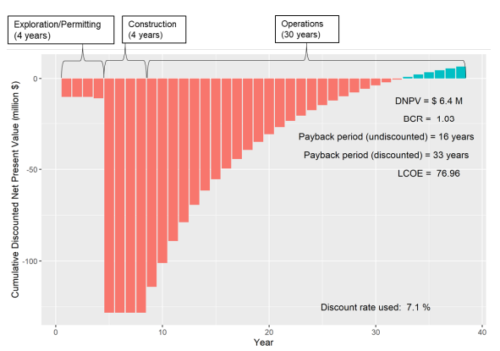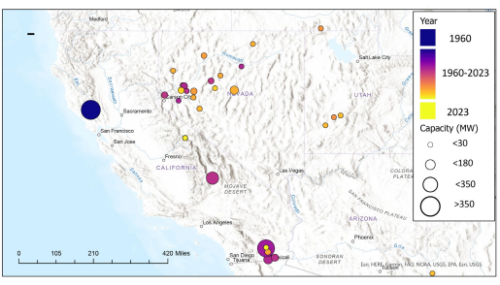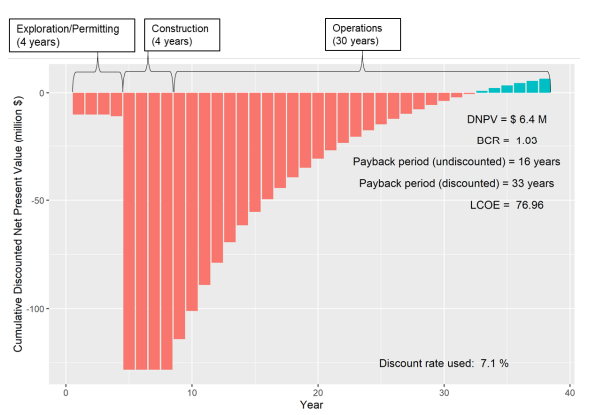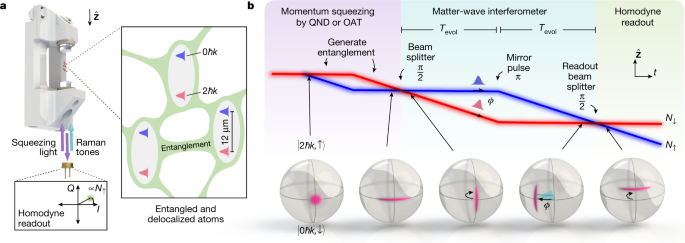リチウムの採掘と地熱エネルギーの生産を組み合わせることで、再生可能エネルギーと貴重な鉱物を提供し、クリーンエネルギーの未来を支えることができる。 Coupling lithium extraction and geothermal energy production could provide renewable energy and valuable minerals to power a clean energy future
2022-10-20 アメリカ・パシフィック・ノースウェスト国立研究所(PNNL)
研究チームは、地熱とリチウムの埋蔵量が豊富なソルトン海に着目し、さまざまな金融、政策、技術シナリオが、この地域の地熱発電所の収益化までの時間や予測利益にどのように影響するかを詳細に検討した。許認可期間の短縮、建設コストの削減、政府からの補助金などが地熱発電の実現性を高める可能性があるが、リチウム抽出との併設が最も障壁を低くし、将来の地熱発電開発を成功に導く可能性があることが示された。
地熱発電所でのリチウム抽出の併設がどの程度産業を変える可能性があるかを判断するために、研究者はソルトン海での発電所の収益性を長期的に予測する技術経済分析を行った。さまざまなスケジュール、資金調達方法、技術を検討した結果、リチウム抽出の導入は、地熱発電所に最も大きな影響を与えると予測された。
研究者たちは、別の報告書で、インセンティブによる開発コストの削減、契約方法の近代化、地熱発電所が提供するグリッドサービスの評価によって、地熱開発がより短い時間で競争力を持ち利益を生むようになることを明らかにしている。地熱開発のリスクとコストを下げるための 1 つのオプションは、地熱の特徴を適切に補償する市場ベースのア プローチである。
<関連情報>
- https://www.pnnl.gov/news-media/lithium-extraction-and-geothermal-energy-dynamic-duo
- https://www.pnnl.gov/main/publications/external/technical_reports/PNNL-32717.pdf
- https://www.pnnl.gov/main/publications/external/technical_reports/PNNL-32760.pdf
ソルトン海地熱開発,参入への非技術的な障壁-分析と展望。 Salton Sea Geothermal Development. Nontechnical Barriers to Entry –Analysis and Perspectives
Dave Goodman,Patrick Mirick,Kyle Wilson
June 2022

Abstract
Geothermal energy offers an opportunity to generate baseload, renewable energy that can help support the transition to an energy economy with reduced impacts on climate change and replace older, more expensive, nonrenewable, and more resource-impacting energy-generation facilities. The United States has the largest known geothermal resource in the world, with over 31 GW of conventional geothermal potential. However, due to market conditions, an inability to properly quantify both electrical grid benefits and resource stability, and the difficulty of exploring and developing the geothermal resource, few new geothermal projects have come online over the past three decades.
The Salton Sea, in Imperial County, California, provides a prime location and opportunity to develop new geothermal resources. The Salton Sea contains a robust, well-mapped, geothermal resource, with opportunities for concurrent development of lithium and other mineral resources. This report describes the history of geothermal development at the Salton Sea and compares geothermal to other renewable energy sources in the area. The report then uses a techno-economic analysis (TEA) model referred to as MAGE (Model for Analysis of Geothermal Economics) to analyze the relative benefits and costs of various challenges and opportunities and provides recommendations for streamlining geothermal development at the Salton Sea and elsewhere. The challenges and opportunities analyzed in MAGE were informed by stakeholder interviews and literature reviews.
Based upon the identified challenges and opportunities and the results of MAGE, primary findings are that certain nontechnical barriers such as permitting costs play only a minor role in determining the viability of development of the geothermal resource at the Salton Sea. Other barriers such as permitting timelines, government/agency coordination, and the potential colocation of lithium extraction with a geothermal plant may result in much larger impacts on project viability.
地熱開発における非技術的な障壁 Nontechnical Barriers to Geothermal Development
Dhruv Bhatnagar, Hannah S Rabinowitz, Daniel S Boff, Grace Pennell ,Christine A Holland, Mark Weimar ,Bowen Huang, Di Wu, Alain Bonneville
July 2022

Executive Summary
Geothermal energy presents a significant opportunity for the United States (US). The US has the largest known geothermal resource in the world, with over 31 GW of conventional geothermal (i.e., hydrothermal) potential and another 5,158 GW of enhanced geothermal potential (DOE-GTO 2019). Despite this, the development of geothermal power plants has lagged other renewable resources. Though some of this gap stems from technical barriers and costs, several non-technical barriers are also preventing geothermal energy from reaching its potential. These gaps include a need to reduce the cost impacts of seismic risk, environmental risk, resource exploration, resource drilling, permitting, and variability in plant output by season (e.g., reductions in summer capacity). Ultimately, these barriers manifest in the difficulty of geothermal project developers to compete with wind and solar resources, and successfully contract the output of potential projects with off takers. This report identifies pathways to overcome this contracting challenge. We find that geothermal energy could increase its market presence by acting as a complement to lower cost renewables, providing firm baseload power in low carbon future scenarios as well as a delivering system flexibility. We also outline several contractual and operational strategies that resource developers and government regulators and policymakers can pursue to improve the value of geothermal resources, including pushing for multi-part remuneration mechanisms that guarantee revenue (e.g., availability payments or a contract for differences1 approach) or resource risk hedging approaches (e.g., shaped market products and portfolio resource approaches).
Starting with an overview of the resource’s properties, we conduct four separate analyses which speak to geothermal energy’s development environment. This report is focused on hydrothermal resources (although we do address the potential for enhanced geothermal systems). Accordingly, the analysis effort is largely restricted to those regions with strong hydrothermal resources – the Western U.S., and in particular, the states of California, Oregon, Idaho, Utah, Nevada, New Mexico and Hawaii. See Figure ES-1 for the locations of existing geothermal power plants.
First, we provide a qualitative review of known risks within the geothermal energy development process, focusing on risk mitigation and remediation strategies. Next, we conduct a quantitative examination of historical generation contract prices, or power purchase agreements (PPAs), to help identify electric market trends and opportunities for geothermal power. After that, we evaluate a variety of PPA contracts (for both fossil and renewable resources) to identify mechanisms and strategies that could help to address some of the risks faced by geothermal developers or enhance system revenues. Finally, we conduct a techno-economic optimization and pro forma evaluation of some of the contract mechanisms and strategies using data from existing geothermal power plants.




